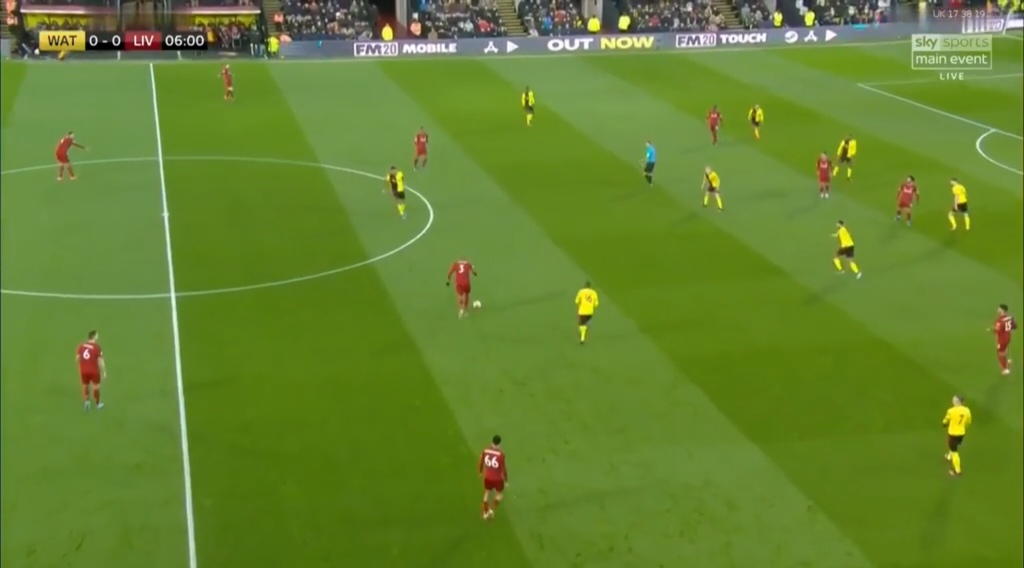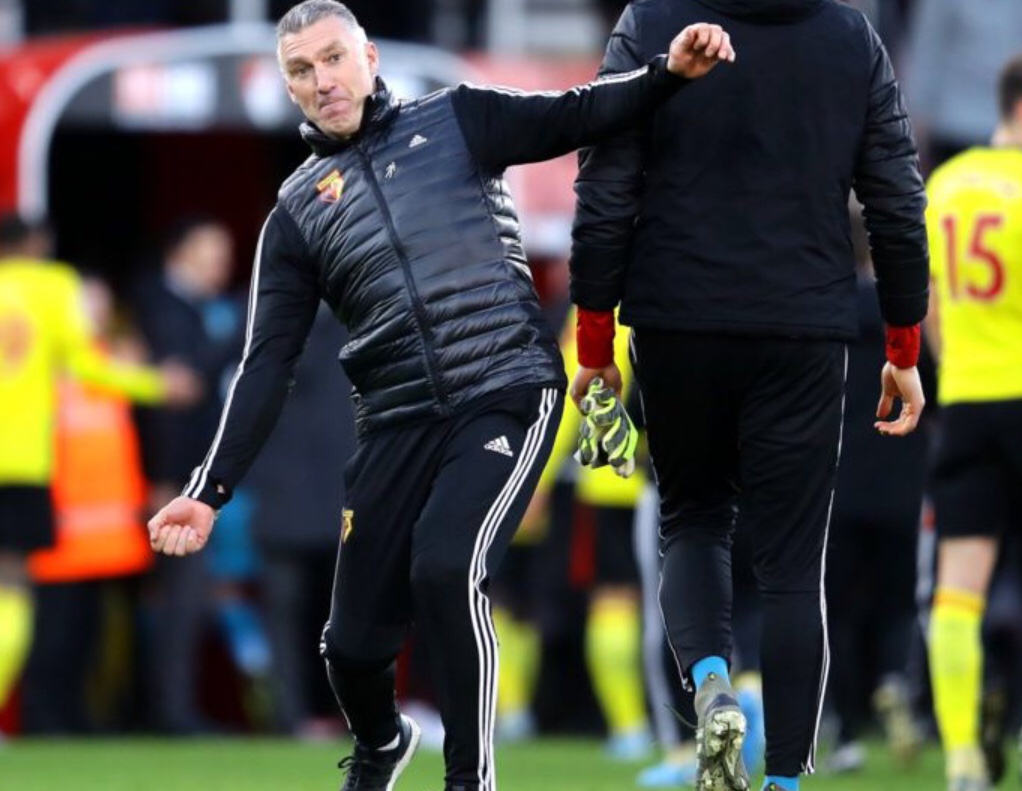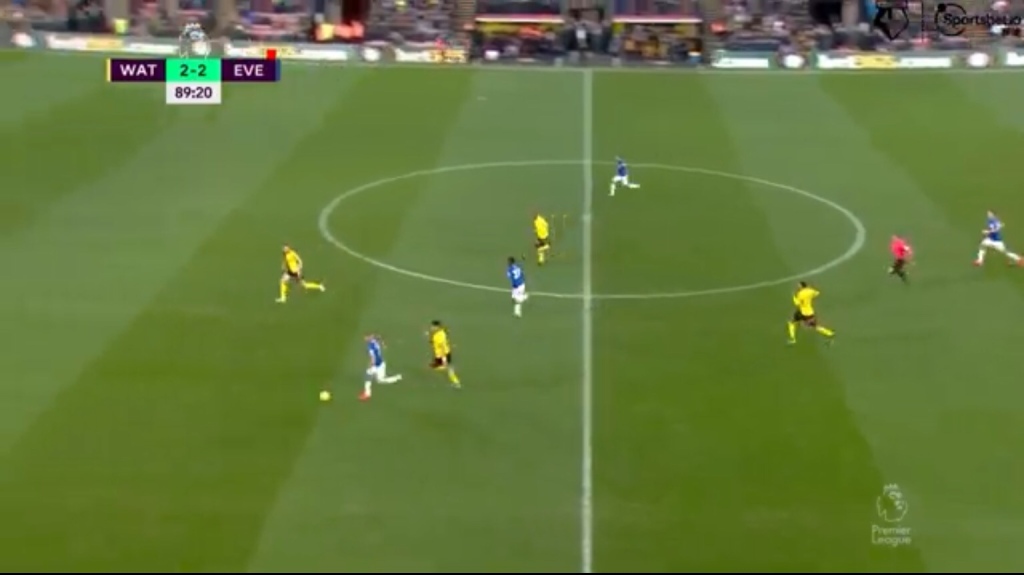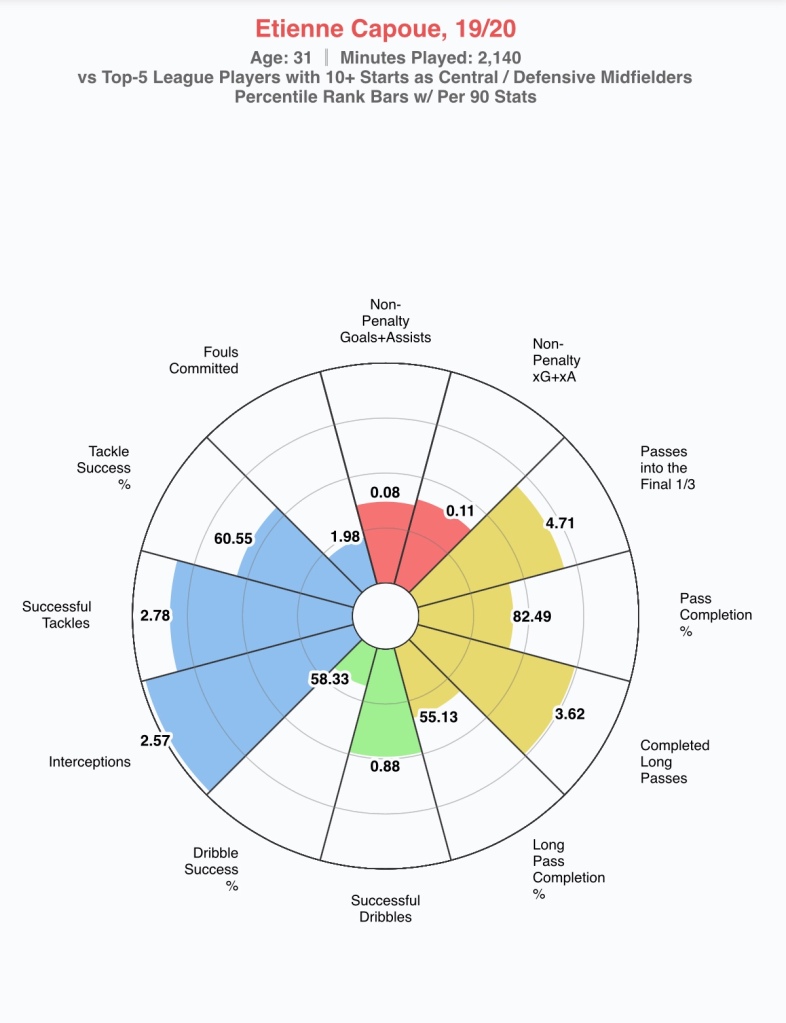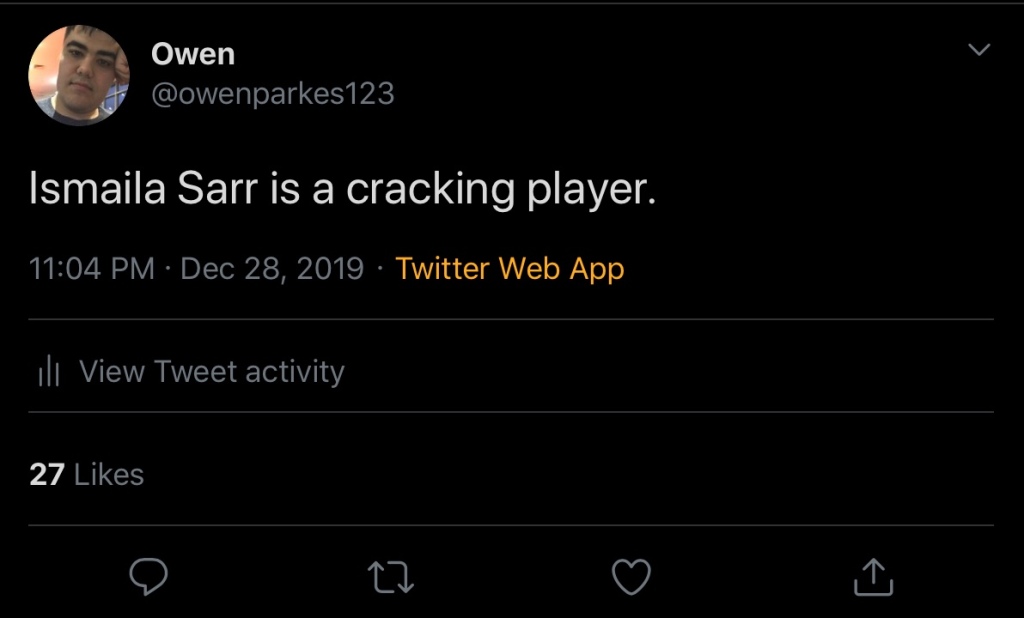I am not going to lie, I really liked Carlo Ancelotti, and despite the duplicity and the bad feeling he has left around Goodison Park, I still do.
I found his tactical setup comfortable, his manner comforting and a feeling of calmness and above all trust surrounding his time at Everton. As managers go, he is the best I have seen at Everton and his premature departure from the club has bitterly disappointed me. Everton under Carlo Ancelotti were safe, comfortable and unoffensive. The worry now for me is that the rollercoaster of Everton is about to return, which leaves the club in a place of huge uncertainty and everyone wanting something just a little bit different.
There have been so many names rumoured to be of interest to Everton since Ancelotti’s move to Real Madrid and I shall go through all that I can while looking into my own choices, explaining myself. Whoever replaces the Italian will be a downgrade, in my view but there are positives that can come as a result of this.

Profile
As Everton do not currently play in a continuous and specific style there are three possible ways to approach this.
Appoint a manager who has worked closely with Carlo Ancelotti at Everton and hope things continue as they would have under him (an internal appointment).
Appoint a manager with a clear identity (but not too dissimilar to Ancelotti) where the club would be in yet more transition, playing in a way that is recognisable so recruitment would be towards a clear tactical plan.
Appoint a manager with a clear identity but one vastly different to Carlo Ancelotti, which would require a transition but would build to a long-term style. This would keep the club more stable going forward in terms of buying new players.
Additionally, any new manager would have to be able to work under a Director of Football and fall in line with whatever recruitment plan Marcel Brands has in place. So, from my point of view, a new manager should not be allowed to simply bring in their own players for close to £70 million, leave in 18 months, and then rinse and repeat.
The Options
1.Appoint a manager who has worked closely with Carlo Ancelotti at Everton and hope things continue as they would have under him (an internal appointment).
Duncan Ferguson

Duncan Ferguson has worked day to day with Carlo Ancelotti for close to 18 months so moving to him, at least in the short term would keep things steady and would not move things out of place, while maintaining the respect of the players and the hierarchy at the club.
‘Big Dunc’ also did a commendable job prior to Ancelotti’s appointment replacing Marco Silva with the club in 18th place in the Premier League.
Ferguson has also been at the club day to day post-Moyes so would have a good grasp at what is wrong at the club, culture-wise and could help lead to fixing it.
His inexperience could also help propel Marcel Brands and allow him to create a vision for the club properly while Ferguson fixes it on the pitch. It is unlikely he would demand certain players, for example.
However, the Everton job is too big a risk for a newcomer to management. Everton have had some really experienced coaches in recent years, and it has seen them struggle. It does leave the question of when it would be right for Duncan but his inexperience discounts him for me personally. Plus, should he lose his job, he likely could not just return to the backroom team, of which he is a valued member.
Verdict: No.
2. Appoint a manager with a clear identity (but not too dissimilar to Ancelotti) where the club would be in yet more transition, playing in a way that is recognisable so recruitment would be towards a clear tactical plan.
Nuno Espírito Santo
Nuno left Wolves at the end of the season after four successful years at Molineux and is the current favourite for the Everton job.
The Portuguese coach would not change a great deal stylistically and would function in the Director of Football model, not ignoring the fact that he improved players at Wolves and played in a recognisable style that was the bedrock of their success. His work ensured two 7th place finishes (two more than Everton can boast in this period), a Europa League quarter-final and an FA Cup semi-final, all stemming from a Championship title win in his first season.
Mostly, Nuno has favoured a 3-4-3/3-5-2 formation at Wolves, relying on quick counters, deep defending and clinical, aggressive forwards.
Everton have proven that defending in a low block suits them, while Dominic Calvert-Lewin and Richarlison have historically proven that they could be useful for Nuno. However, the lack of pace and mobility in Everton’s team would have to be addressed in order for Nuno’s style at Wolves to be translated at Everton.
It is true that Wolves have been really poor this season, finishing in 13th place behind Newcastle and Aston Villa in the bottom half of the Premier League.
The dip in form is an issue, as are some of the final days at several of his previous clubs where he has lost his job in similar circumstances, but Nuno Espírito Santo, if not perfect, would be a lower risk option.
Verdict: Yes
David Moyes
Everyone involved at Everton knows exactly what to expect when it comes to David Moyes. He is also rumoured to be in Everton’s thoughts to replace Carlo Ancelotti.
Moyes has done a fantastic job at West Ham since replacing Manuel Pellegrini in December 2019, leading the club from a relegation battle to qualifying for the Europa League, finishing 6th. Despite Moyes’ and West Ham’s historic struggles, it is not a surprise that Moyes has done well at the London Stadium.
The Hammers boss is out of contract but has decided to trigger an extension in his deal at West Ham. However, he is yet to finalise terms at West Ham, leaving Everton open to him should both parties want a reunion.
David Moyes has actually produced some good football at West Ham, with solid foundations and players who are clearly buying into what he wants to achieve, in spite of difficult and unpopular ownership.
My big concerns over Moyes are firstly, his desire to work under a sporting director; and secondly, just what is the point of returning to a story with Moyes that had gone as far as it could go in 2013 after 11 years in charge? Plus Moyes has been constantly rejected by Everton since. What does that say about him?
Verdict: No but would understand it and feel comfortable
Rafael Benítez
Stylistically, Benitez would be a decent fit at Everton but that’s where the positives end.
To start with the positives, Rafa would come into Everton and continue Carlo’s methods pretty much and get similar if not superior results and continue things nicely. Again, it would be comfortable and avoid any disastrous rollercoaster that could lead Everton to be back in the lower reaches of the Premier League.
The negatives just pile up unfortunately. His Liverpool connections would leave him a month from the sack from game one, Rafa likes to lead recruitment, which could cause issues for Brands, and he would feel like yet another 18-month appointment.
Rafa Benitez is a very good manager, but it would not work.
Verdict: No
Antonio Conte
Antonio Conte would be the best manager Everton have ever appointed and for that reason alone he would be my choice, no doubt.
However, it is very unlikely Conte would consider the Everton job and is in talks with Spurs about replacing Jose Mourinho. Conte would also be at odds with Marcel Brands, though the ability of Conte would vastly outweigh Brands’ importance to Everton to be fair.
Conte would want winners and would make Everton winners but would also be short term and would want huge money to spend.
A dream appointment but is not possible
Verdict: Yes!
Unai Emery

If Unai Emery had not just won the Europa League and qualified for the Champions League with Villareal, like the last time we were looking for a manager and every time before that, Emery would be my number one choice and I would consider it realistic. Unfortunately, it is not likely Emery that would swap that job security for the Premier League again so soon after his time at Arsenal.
Emery is amazing but it is not realistic to consider him a candidate at Everton.
Verdict: Yes
Sean Dyche
For all the myths, Sean Dyche is a fantastic manager.
There are 1,000 reasons why, which mostly include a nothing budget coupled with huge overachievement at Turf Moor, owing to a side that has a very clear idea, huge commitment and players who continue to improve, with an eye to introducing players from the academy (most notably Dwight McNeil and Ben Mee.)
Dyche would not be a huge shift from what Carlo Ancelotti has implemented and suits the current team.
Everton have defenders who suit defending deeper, a midfield not necessarily suited to playing so open and lack real mobility and strikers who thrive off crosses.
Dyche has also been used to working with a Sporting Director at Burnley in Mike Rigg.
Everton will not consider Sean Dyche mostly due to perception.
He is a good fit but will not be looked at.
Verdict: Yes
3. Appoint a manager with a clear identity but one vastly different to Carlo Ancelotti, which would require a transition but would build to a long-term style. This would keep the club more stable going forward in terms of buying new players.
Maurizio Sarri

Sarri is a really good manager, whose achievements have not always been appreciated – especially the job he did at Chelsea, where only in hindsight has the job he did been properly respected.
‘Sarriball’ is something that, if he did stay for a long period of time at Everton, could appease fans. Inviting a high press, then drawing quick transitions and playing with quality in the final third could be exciting but Sarri’s recent jobs have been short-term and with a squad that would require major surgery to play that way, what would be the point?
Verdict: Yes, if he was willing to stay long term, (otherwise no.)
Paulo Fonseca
Fonseca is a manager whose stock continues to rise in the game despite his recent dismissal at Roma.
Paulo Fonseca has been linked with Everton in the past while he was at Shakhtar Donetsk to replace both Ronald Koeman and Sam Allardyce, but Everton favoured the appointment of Allardyce himself then Silva over the ex-Roma boss.
The job he did at Roma was not great as they suffered a lot in the final months under Fonseca before he was sacked after Manchester United comfortably beat them in the Europa League.
Fonseca is sure a manager with a lot going for him, but I would be worried about Everton’s short-term prospects with Fonseca and has there been any proof that once he got his style of player in at Everton then he would be a success?
There are worse options out there than Fonseca and his ability to do well in Europe is a plus point, but there are too many worries about the Portuguese to risk appointing him?
Verdict: No
Eddie Howe
Verdict: No
Marcelo Gallardo
Gallardo is a hero at River Plate after spending 7 years in Argentina, winning two Copa Libertadores by playing an attacking style of football.
Gallardo would, admittedly, be an exciting prospect at Everton and if he could make the team his own, the Argentine could be the leader of a cultural shift at Everton which would transition Everton from a short-term club to a side that has a clear identity like at River Plate. He utilises a mix of 4-3-1-2 and 4-4-2 formations, encouraging ball retention and deploying a high line, but has been known to shift formations according to new players coming in and leaving.
The risk is that he has never managed in Europe, and it is unknown how his style would fare in the short term but if he was to be given time, this could be a success.
Verdict: Yes
Graham Potter
It is no secret that I am not Graham Potter’s biggest fan, and it is not an appointment I would like.
Yet, whilst his methods are flawed, overrated and have barely improved Brighton’s fortunes in the league, having spent decent money on the way, it would be something I could understand if not support.
Potter plays a specific style of football, encouraging his teams to be aggressive, maintain possession and control games. Defensively, Brighton are good and do adapt well to certain games. Yet despite some clear positives to his methods, I do not think they are necessarily compatible with the level Brighton find themselves in from year to year.
Everton could be a better squad for him to prove himself, but it would be a risk on a manager who is yet to do well in England.
Verdict: No
Cristophe Galtier
Galtier is somewhat of a miracle worker and out of the names mentioned in this section of candidates, he would be my choice.
He has proven himself as an overachiever at Lille, winning Ligue 1 this season and subsequently deciding to leave the French side.
He improves every aspect of a team, making his teams solid and difficult but also maximising the ability of his forward players. This was clear as he improved someone like Jonathan Bamba from a forward who lacked end product to someone who was key for Lille. He also revitalised Renato Sanches and found effective solutions such as Yilmaz whose involvement was the difference ultimately.
Verdict: Yes!
Ralf Rangnick
Rangnick has been linked with Everton for close to 10 years now and it would be fate that he would end up at Everton finally.
The issue is, Rangnick is someone who is great to have behind the scenes to build a team but is not someone who has had much success as the manager himself.
Plus there is also the question as to how he would be compatible with Marcel Brands.
Verdict: No.
Top Choice?
Appointing a manager at Everton is not an easy task. There is no obvious style to the team both in performances and historic recruitment for different managers.
For me, the next manager has to be someone who has a record of getting more from a team than you would expect, whether that be an expansive style of play or a more pragmatic style. I would love Unai Emery, but at time of writing I would be happiest with Dyche or Galtier. Choose your fighter – Everton are looking for another manager!







